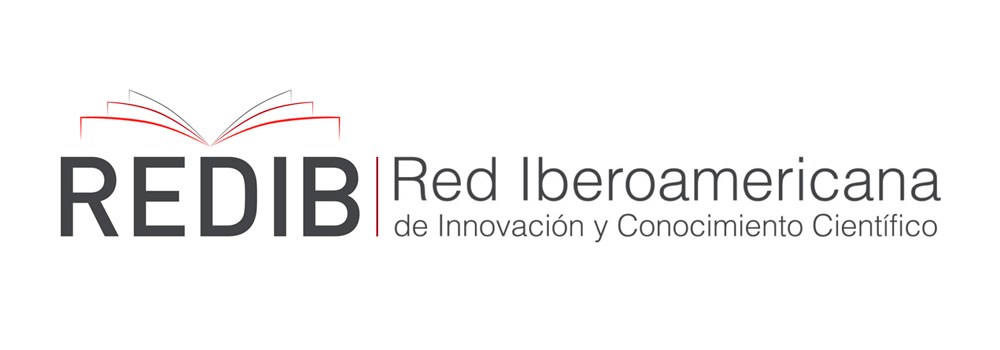The intercultural educator: the what, how, and why of teaching intercultural communicative competence in Latin America
DOI:
https://doi.org/10.35622/j.rie.2022.02.009Keywords:
Foreign language, intercultural competence, mediator, teachingAbstract
A reflective assessment of teaching praxis’ notions and beliefs becomes essential in instructing learners to effectively interact in intercultural encounters. Arguments in favor of teaching the intercultural component have been promoted for years but have not fully reached systematic incorporation in foreign language education in Latin American countries. This paper examines the concept of the intercultural mediator, approaching key questions (why, what, and how) that emerge when integrating intercultural objectives in the language classroom supported on theoretical frameworks and insights from the authors’ teaching experience. The methodology used was an exploratory qualitative document review. Scientific articles published in reliable databases were consulted to answer the questions targeting intercultural communicative competence teaching. The main objective is to invigorate the discussion regarding the intercultural component in the classroom while exploring practical ideas to teach it. Findings suggest that there is a growing body of literature and interest on approaching theoretical and practical standpoints toward ICC guiding teachers to become intercultural educators willing to integrate and enable learners with the crucial ICC competence. Educators can make a difference in the classroom by utilizing different Latin American resources and material to mediate intercultural matters in the foreign language classroom.
References
Aguado, T. (2003). Pedagogía intercultural. McGraw-Hill.
Álvarez, I., & González, I. (2018). Teachers’ intercultural competence: a requirement or an option in a culturally diverse classroom? International Journal of Inclusive Education, 22(5), 510-526. https://doi.org/10.1080/13603116.2017.1377298
Arkoudis, S., Watty, K., Baik, C., Yu, X., Borland, H., Chang, S., Lang, I., Lang, J., & Pearce, A. (2013). Finding common ground: enhancing interaction between domestic and international students in higher education. Teaching in Higher Education, 18(3), 222-235. https://doi.org/10.1080/13562517.2012.719156
Bennett, M., & Bennett, J. (2020). Developing intercultural sensitivity: An integrative approach to global and domestic diversity. SAGE.
Byram, M. (1997). Teaching and assessing intercultural communicative competence. Multilingual Matters.
Byram, M. (2002). Chapter 4. On Being ‘Bicultural’ and ‘Intercultural’. En Intercultural Experience and Education (pp. 50-66). Multilingual Matters. https://doi.org/10.21832/9781853596087-007
Byram, M. (2021). Teaching and Assessing Intercultural Communicative Competence. Multilingual Matters. https://doi.org/10.21832/9781800410251
Byram, M., & Feng, A. (2005). Teaching and researching intercultural competence. En Handbook of research in second language teaching and learning (pp. 911-930). Lawrence Erlbaum.
Council of Europe. (2001). Common European Framework of Reference for Languages: Learning, teaching, assessment. University Press.
Cubero, K. (2021). Theoretical Proposal: exploring the symbiosis of CLIL and PBL to foster an intercultural learning experience in EFL. DEDiCA Revista de Educação e Humanidades (dreh), 19, 267-288. https://doi.org/10.30827/dreh.vi19.21829
Dawson, D., Dimitrov, N., Meadows, K., & Olsen, K. (2013). Bridging the gap: the impact of the teaching in the canadian classroom program on the teaching effectiveness of international Teaching assistants. Toronto: Higher Education Quality Council of Ontario. https://heqco.ca/wp-content/uploads/2020/03/ITAs_ENG.pdf
Deardorff, D. (2006). Identification and assessment of intercultural competence as a student outcome of internationalization. Journal of Studies in International Education, 10(3), 241-266. https://doi.org/10.1177/1028315306287002
Deardorff, D. (2009). Implementing intercultural competence assessment. SAGE.
Derin, A., Zeynep, Ç., Pinar, E., Özlem, K., & Gökçe, K. (2009). Turkish EFL teachers’ opinions on intercultural approach in foreign language education. Procedia - Social and Behavioral Sciences, 1(1), 1611-1616. https://doi.org/10.1016/j.sbspro.2009.01.283
Dimitrov, N., & Haque, A. (2016). Intercultural teaching competence: a multi-disciplinary model for instructor reflection. Intercultural Education, 27(5), 437-456. https://doi.org/10.1080/14675986.2016.1240502
Göbel, K., & Helmke, A. (2010). Intercultural learning in English as foreign language instruction: The importance of teachers’ intercultural experience and the usefulness of precise instructional directives. Teaching and Teacher Education, 26(8), 1571-1582. https://doi.org/10.1016/j.tate.2010.05.008
Goldstein, S. B. (2022). A systematic review of short-term study abroad research methodology and intercultural competence outcomes. International Journal of Intercultural Relations, 87, 26-36. https://doi.org/10.1016/j.ijintrel.2022.01.001
Huang, L. (2021). Developing intercultural communicative competence in foreign language classrooms – A study of EFL learners in Taiwan. International Journal of Intercultural Relations, 83, 55-66. https://doi.org/10.1016/j.ijintrel.2021.04.015
Leutwyler, B., Mantel, C., Petrovic, D., & Dimitrijević, B. (2014). Teachers’ beliefs about intercultural education: different levels of intercultural sensitivity in schooling and teaching. Educational Research Journal, 5(8), 280-289. https://doi.org/10.14303/er.2014.196
McLaren, P. (2003). Critical pedagogy: look at the major concepts. Course.
Morgan, H. (2022). Conducting a Qualitative Document Analysis. The Qualitative Report, 27(1), 64-77. https://doi.org/10.46743/2160-3715/2022.5044
Porto, M. (2019). Using the council of Europe’s autobiographies to develop quality education in the foreign language classroom in higher education. Language and Intercultural Communication, 19(6), 520-540. https://doi.org/10.1080/14708477.2019.1673401
Savu, E. (2014). The ‘Intercultural’ Teacher – A New Response to the Teaching Career. Procedia - Social and Behavioral Sciences, 128, 111-116. https://doi.org/10.1016/j.sbspro.2014.03.127
Seelye, N. (1993). Teaching culture: Strategies for intercultural communication. Natl Textbook Co.
Skrefsrud, T. (2020). Teachers as intercultural bridge‐builders: Rethinking the metaphor of bridge‐building. Teaching Theology & Religion, 23(3), 151-162. https://doi.org/10.1111/teth.12550
Downloads
Published
Issue
Section
License
Copyright (c) 2021 Karol Cubero

This work is licensed under a Creative Commons Attribution 4.0 International License.



























